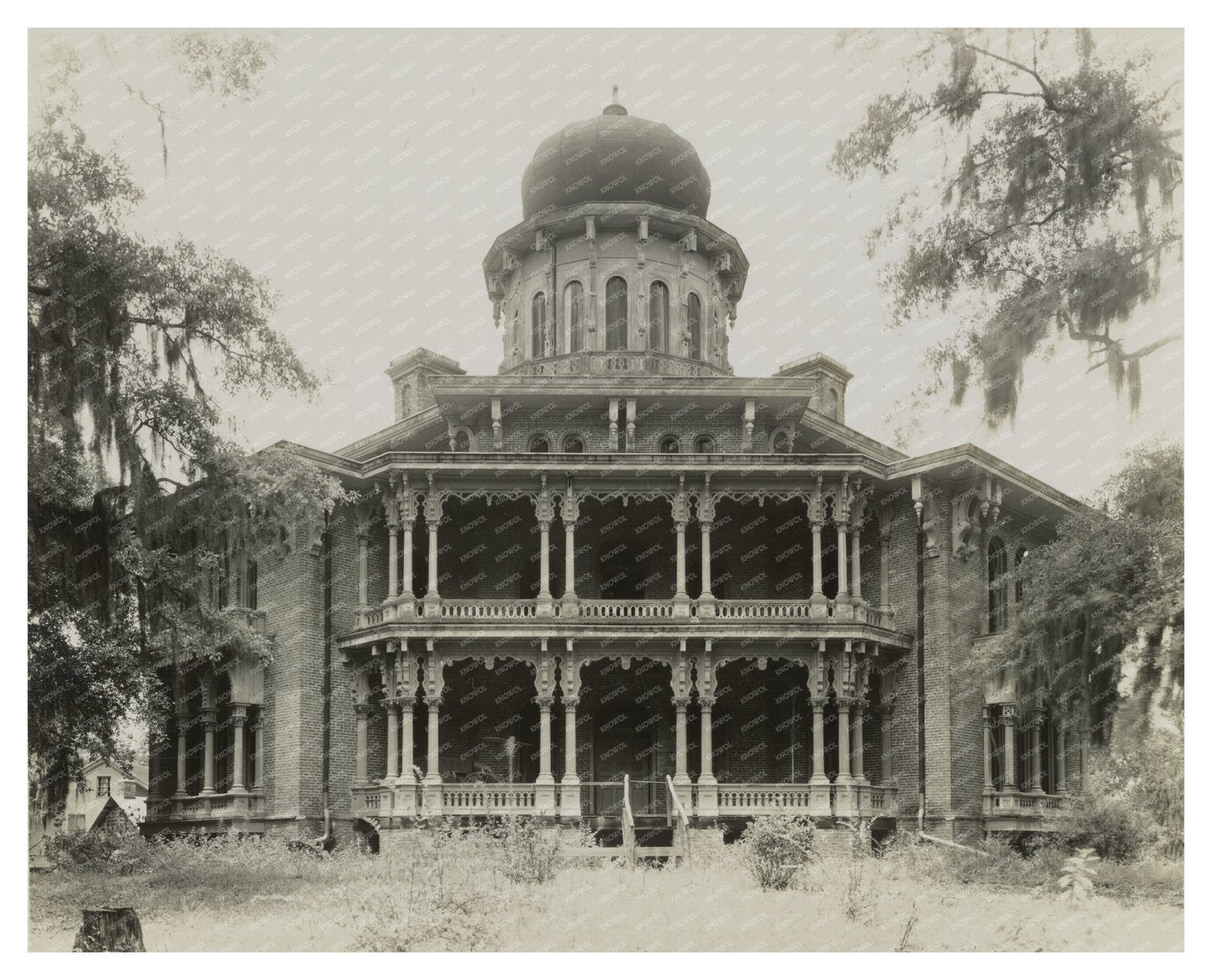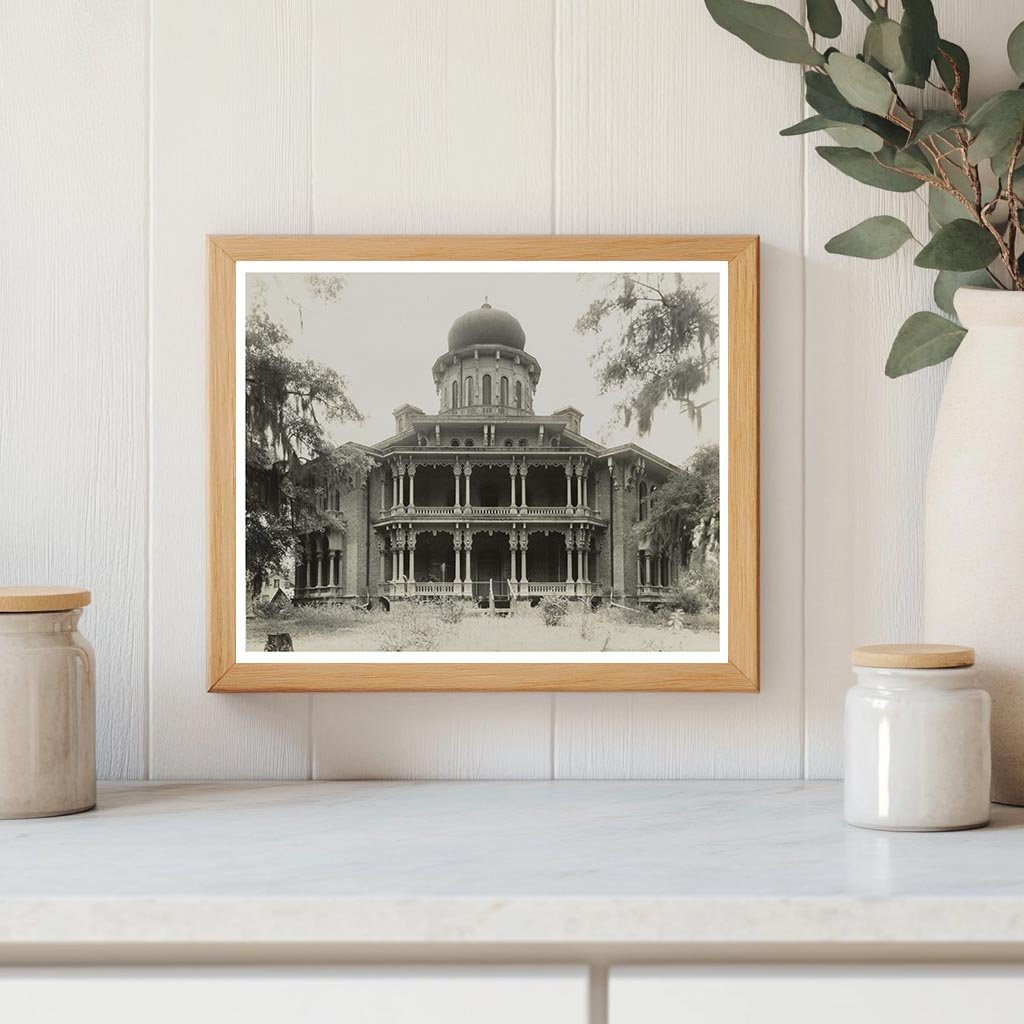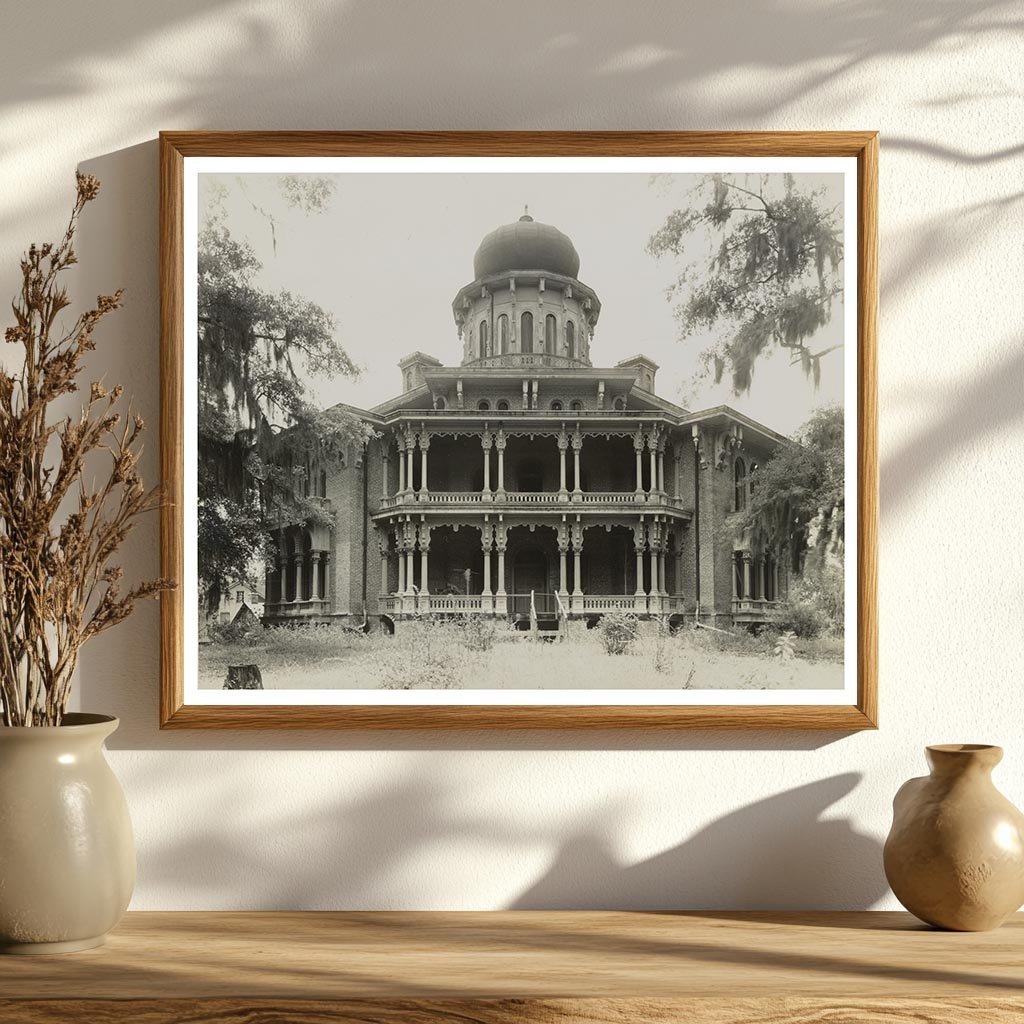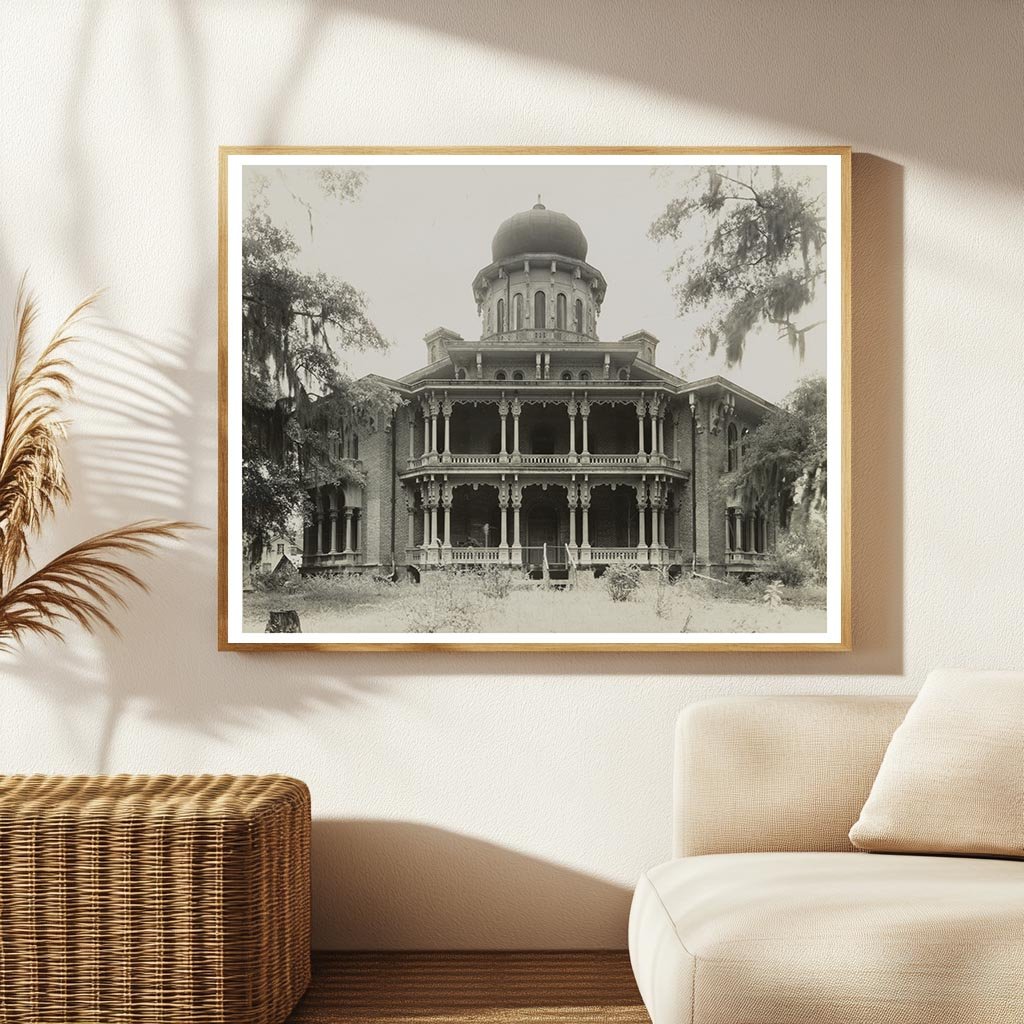



Nutts Folly Castle, Natchez, MS: A 1860s Architectural Echo
This vintage photograph captures Nutts Folly, an unfinished Moorish-style castle located in Natchez, Adams County, Mississippi. Designed by Philadelphia architect Sloan, the construction of this unique 32-room structure began around 1860. However, the project was halted in 1861 when workmen left for war, leaving tools and paint buckets in place, creating a striking snapshot of interrupted ambition.
The buildings materials were sourced locally, with bricks made on-site. The basement was hastily arranged for living quarters, while the intricate woodwork was crafted in Philadelphia and returned to Mississippi for assembly. This architectural endeavor symbolizes the fusion of Northern design influence and Southern craftsmanship during a tumultuous period in American history.
Documented as part of the Carnegie Survey of the Architecture of the South, this image serves as a historical record of a significant architectural project. The remnants of Nutts Folly continue to intrigue visitors and historians alike, representing both aspiration and the realities of its time.

Nutts Folly Castle, Natchez, MS: A 1860s Architectural Echo
